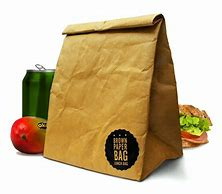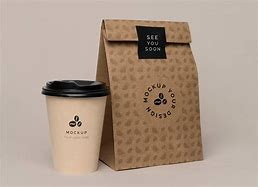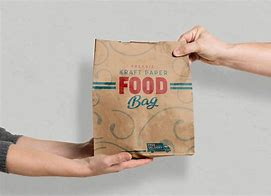Content Menu
● Understanding Paper Bags
>> Composition of Paper Bags
● The Risks of Microwaving Paper Bags
>> Fire Hazard
>> Toxic Fumes
>> Uneven Heating
● Safe Alternatives to Microwaving Paper Bags
>> Microwave-Safe Containers
>> Transfer Food to Plates
>> Use Microwave-Safe Oven Bags
>> Cover with Microwave-Safe Lids
● Best Practices for Microwaving Food Safely
● The Science Behind Microwaving
>> Interaction with Different Materials
● Common Misconceptions About Microwaving Paper Bags
>> All Paper Bags Are Safe
>> It's Just Like Using a Plate
>> It's Safe If I Don't Microwave It Long
● Exploring Alternatives for Food Storage and Reheating
>> Vacuum-Sealed Bags
>> Silicone Food Storage Bags
>> Beeswax Wraps
>> Cultural Perspectives on Microwaving Practices
● Conclusion
● Related Questions
>> 1. What happens if I accidentally put a paper bag in the microwave?
>> 2. Can I use brown paper bags in the microwave?
>> 3. What types of containers are safe for microwaving?
>> 4. Is it safe to reheat food in aluminum foil?
>> 5. How can I tell if a container is microwave-safe?
● Citations:
Microwaves have revolutionized the way we prepare and reheat food, offering speed and convenience that traditional cooking methods cannot match. However, not everything is suitable for microwave use. One common question that arises is whether it is safe to put paper bags in the microwave. This article will explore the implications of microwaving paper bags, the potential risks involved, and safe alternatives for reheating food.

Understanding Paper Bags
Paper bags are ubiquitous in our daily lives. From grocery shopping to packing lunches, they serve a variety of purposes. Typically made from cellulose fibers derived from wood pulp, paper bags are designed for lightweight carrying and storage. However, their construction also makes them susceptible to heat and fire when exposed to microwaves.
Composition of Paper Bags
- Material: Most paper bags are made from a single layer of paper, which is not designed to withstand high temperatures.
- Additives: Some paper bags may contain inks or dyes used in printing, which can release harmful chemicals when heated.
The Risks of Microwaving Paper Bags
While it might seem harmless to pop a leftover sandwich in a paper bag and place it in the microwave, doing so can lead to several serious hazards.
Fire Hazard
The most significant risk associated with microwaving paper bags is the potential for fire. When subjected to the intense heat generated by microwaves, the cellulose fibers in the paper can dry out and ignite. This risk increases if the bag contains any metal components like staples or handles, which can spark and cause a fire.
Toxic Fumes
Heating paper bags can also release toxic fumes into your food. As the paper heats up, it may break down and emit harmful chemicals that can contaminate your meal. Inhalation of these fumes can be irritating to your respiratory system and pose health risks.
Uneven Heating
Paper bags are poor conductors of heat, which means that they do not distribute heat evenly throughout their structure. This can create hotspots within the bag that may reach dangerously high temperatures while other areas remain cool. Such uneven heating not only increases the risk of fire but also leads to inconsistent cooking of food.
Safe Alternatives to Microwaving Paper Bags
Given the risks associated with using paper bags in microwaves, it is essential to explore safer alternatives for reheating food.
Microwave-Safe Containers
The best option for reheating food in a microwave is to use containers specifically labeled as microwave-safe. These containers are designed to withstand high temperatures without melting or releasing harmful substances.
- Glass Containers: Borosilicate glass containers are ideal as they handle temperature changes well.
- Plastic Containers: Ensure they are marked as microwave-safe; avoid single-use plastics that may warp or leach chemicals.
- Ceramic Dishes: Many ceramic dishes are safe for microwave use but check for metallic trims that could spark.
Transfer Food to Plates
If you find yourself with food in a paper bag, transfer it to a microwave-safe plate before heating. This simple step eliminates the fire risk associated with paper bags and allows for even heating of your food.
Use Microwave-Safe Oven Bags
For those who prefer using bags, consider microwave-safe oven bags made from heat-resistant materials. These bags are designed specifically for microwave use and can safely contain food while it heats.
Cover with Microwave-Safe Lids
When reheating food in containers, covering them with microwave-safe lids or plates helps retain moisture and prevents splattering without risking combustion.

Best Practices for Microwaving Food Safely
To ensure safe microwaving practices, consider the following tips:
- Check Labels: Always verify that containers are labeled as microwave-safe before use.
- Avoid Overheating: Heat food in short intervals and check frequently to avoid overheating.
- Pierce Packaging: If using sealed packaging (like plastic wrap), pierce it to allow steam to escape and prevent explosions.
- Stir Foods: Stirring food during heating helps distribute heat evenly and reduces cold spots where bacteria could survive.
The Science Behind Microwaving
Understanding how microwaves work can further clarify why certain materials should not be used in them. Microwaves cook food by emitting electromagnetic waves that excite water molecules within the food. This process generates heat, which cooks the food from the inside out.
Interaction with Different Materials
- Water Molecules: Materials containing water (like most foods) absorb microwaves efficiently, leading to even cooking.
- Non-Conductive Materials: Glass and ceramic are excellent choices because they do not absorb microwaves but allow them to pass through and excite the water molecules in the food.
- Conductive Materials: Metals reflect microwaves and can cause sparks or fires if used improperly.
Common Misconceptions About Microwaving Paper Bags
There are several misconceptions surrounding the use of paper bags in microwaves that need addressing:
All Paper Bags Are Safe
Not all paper bags are created equal. While some may be treated or coated for specific uses (like bakery bags), many standard grocery or lunch bags are not designed for high temperatures and can catch fire.
It's Just Like Using a Plate
While it may seem convenient to use a paper bag like a plate, they lack the structural integrity needed for safe heating. Unlike plates specifically designed for microwaving, paper bags do not provide adequate protection against heat buildup.
It's Safe If I Don't Microwave It Long
Even short bursts of microwaving can pose risks if using inappropriate materials like paper bags. The cumulative effect of repeated heating can lead to degradation of the material over time.
Exploring Alternatives for Food Storage and Reheating
In addition to using appropriate containers for microwaving, consider alternative methods for storing and reheating food:
Vacuum-Sealed Bags
Vacuum-sealing food removes air from packaging, extending shelf life while preventing freezer burn. These bags are often safe for microwave use; however, ensure they do not contain any metallic components.
Silicone Food Storage Bags
Silicone bags are an excellent alternative as they are flexible, reusable, and safe for both freezing and microwaving. They withstand high temperatures without leaching harmful chemicals into your food.
Beeswax Wraps
Though not suitable for reheating directly in a microwave, beeswax wraps offer an eco-friendly solution for storing food safely at room temperature or in refrigerators without using plastic wrap.
Cultural Perspectives on Microwaving Practices
Different cultures have varied approaches to reheating and storing food:
- Asian Cultures: In many Asian countries, steaming is preferred over microwaving due to its ability to retain nutrients while ensuring even cooking.
- Western Cultures: In Western countries, convenience often dictates practices; thus, many rely heavily on microwaves despite potential risks associated with improper materials.
Conclusion
In conclusion, while paper bags are convenient for carrying items, they pose significant risks when used in microwaves. The potential for fire hazards and toxic fume release makes them unsuitable for reheating food. By opting for microwave-safe containers or transferring food to appropriate dishes before heating, you can enjoy your meals safely without compromising on convenience. Understanding proper practices not only enhances safety but also improves overall cooking quality when using this modern appliance.

Related Questions
1. What happens if I accidentally put a paper bag in the microwave?
- If you accidentally put a paper bag in the microwave, monitor it closely for signs of smoke or fire. If you see smoke or flames, turn off the microwave immediately and unplug it if safe to do so.
2. Can I use brown paper bags in the microwave?
- No, brown paper bags should not be used in the microwave due to their flammability and potential chemical releases when heated.
3. What types of containers are safe for microwaving?
- Safe options include glass containers labeled as microwave-safe, ceramic dishes without metallic trims, and specially designed plastic containers marked as microwave-safe.
4. Is it safe to reheat food in aluminum foil?
- Generally, aluminum foil should not be used in microwaves as it can cause sparks and fires; however, flat sheets without crumples may be acceptable if kept away from walls.
5. How can I tell if a container is microwave-safe?
- Look for labels indicating "microwave-safe" on plastic or glass containers; if unsure, consult manufacturer guidelines or avoid using it altogether.
Citations:
[1] https://www.housedigest.com/486240/this-is-what-happens-when-you-put-paper-bags-in-the-microwave/
[2] https://custompackaginglosangeles.com/microwave-paper-bags/
[3] https://www.reddit.com/r/EatCheapAndHealthy/comments/1jmm0u/microwave_popcorn_in_a_brown_paper_bag_its/
[4] https://www.whirlpool.com/blog/kitchen/what-you-can-cant-microwave.html
[5] https://www.kimecopak.ca/blogs/news/can-you-put-a-paper-bag-in-microwave
[6] https://www.ahs.com/home-matters/quick-tips/11-things-you-should-never-put-in-the-microwave/
[7] https://www.ahs.com/contentassets/0db6d99c23b74144b793407b45b3d039/hero-microwavenonos.png?sa=X&ved=2ahUKEwjatcyJ9KmKAxVrhIkEHTfwNEAQ_B16BAgMEAI































